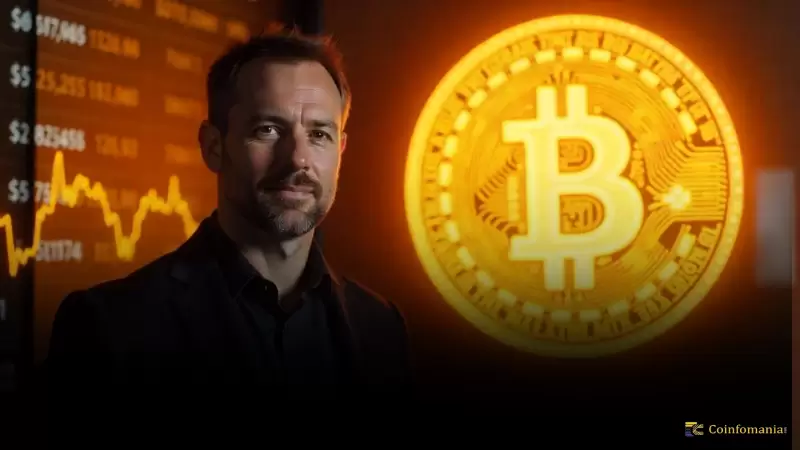 |
|
 |
|
 |
|
 |
|
 |
|
 |
|
 |
|
 |
|
 |
|
 |
|
 |
|
 |
|
 |
|
 |
|
 |
|
加密貨幣新聞文章
How to Avoid High Gas Fees: Transaction Simulation Can Help Keep Crypto Novices Informed
2025/01/08 06:00

Nodes in a network validate blockchain transactions and earn crypto in the form of fees, which serves as an incentive for them to process these transactions. When there are more transactions than usual on a blockchain, users compete to achieve higher processing speeds, driving up fees. This phenomenon is often observed during periods when a particular cryptocurrency experiences a price increase. As more users tend to move their assets around during these times, the volume of transactions increases, leading to higher fees.
Similarly, a high demand for a particular token corresponds with increased fees. For instance, when a lot of hype surrounds a project, the fees tend to be higher. During the spring of 2023, Bitcoin transaction fees were relatively high due to the popularity of the Bitcoin-based protocol BRC-20.
Users’ options to avoid high costsOne option to avoid high costs is to wait for fees to go down before sending cryptocurrency. However, this approach may not be feasible if you want to send it quickly. Fees can also be slightly lower during slow hours in leading markets, like nighttime in the US.
If a user is sending crypto to another exchange, they can exchange it for an asset like Ripple or Litecoin, whose fees tend to be lower. Then, they swap it back to their preferred asset on the other exchange. However, they’ll still be charged buying and selling fees.
A transaction simulation is an excellent way to predict fees, help keep crypto novices informed, and prevent mistakes. The simulation feature of Ambire Wallet, an open-source smart wallet that uses account abstraction, informs users of the effect of a transaction on their balances before they sign off on it. In addition to providing all the features and functions available from widely adopted solutions like Metamask, Ambire offers account recovery, prepayment of gas fees to avoid spikes, and transaction batching. It’s more affordable to send one large transaction instead of a few small ones. Blockchain activity determines the costs, not the amount of crypto you’re sending, so you’d pay the same fee for a small and a large transaction value. Ambire Wallet users combine transactions and broadcast them together, which saves both time and money.
The anatomy of transaction simulationAmbire greatly alleviates the complexity of transaction simulation. The intricate process starts with defining input parameters and ends with assessing transaction outcomes. There are several critical stages, each contributing to the reliability and accuracy of the simulation results.
A series of input parameters defines the transaction’s behavior and features. These parameters include sender address, transaction type, receiver address, gas price and limit, and other relevant attributes. Users customize the simulation to accurately reflect objectives and scenarios, but not without meticulously defining these parameters. After defining them, validation procedures are performed to ensure the transaction’s integrity and feasibility. Validation involves verifying address authenticity and evaluating the parameters’ compliance with preset criteria.
Following validation, the simulation prepares the blockchain environment based on current data and system configuration. This includes retrieving relevant information, including, but not limited to, contract codes, account balances, and gas, which measures the computational resources consumed while the simulated transaction is being executed.
Gas estimation involves evaluating the consumption of separate transaction elements and operations. Memory usage, opcode cost, and storage access are considered to accurately estimate the total gas required to execute the transaction. This determines the gas fees associated with the transaction.
Finally, the transaction simulation executes the operations entered in the input parameters. This stage involves simulating fund transfers, executing smart contract functions, and updating contract storage according to predetermined transaction logic. The simulation tracks each operation’s gas consumption during execution, monitoring the use of computational resources throughout the process. Tracking gas use makes it possible to assess how efficient transaction operations are and identify potential issues that may impact performance.
The simulation ends with an evaluation of transaction results, specifically the cost and integrity of the transaction. The evaluation involves verifying the completion of transaction operations, checking for errors, and examining the ensuing alterations to the blockchain state.
Simulations empower users to gauge the effectiveness of the entire process and attain valuable insights into the transaction’s impact on their finances, investment, and the whole blockchain.
Transaction simulation reduces riskEven novices know that you can’t reverse a blockchain transaction. Once a user signs a transaction, they cannot change or undo it. Simulation lets them predict potential issues or consequences, greatly reducing the risk of irreparable errors. You can simulate swaps, trades, or liquidity provisions in DeFi interactions to make sure they won’t lead to unexpected losses ensuing from non-optimal trade execution or slippage.
Ethereum transactions can incur substantial gas fees depending on their complexity and the degree of network congestion at any given time. Simulating transactions provides an estimate of the gas required, preventing users from underpaying, which can lead to stuck or failed transactions. Overpaying is equally undesirable, as excessive gas fees inflate transaction costs needlessly. By providing accurate gas estimates, simulation makes it possible to set the proper gas limits and keep expenses in check.
The outcomes of blockchain transactions aren’t immediately apparent, especially
免責聲明:info@kdj.com
所提供的資訊並非交易建議。 kDJ.com對任何基於本文提供的資訊進行的投資不承擔任何責任。加密貨幣波動性較大,建議您充分研究後謹慎投資!
如果您認為本網站使用的內容侵犯了您的版權,請立即聯絡我們(info@kdj.com),我們將及時刪除。
-

- “ Cardano(ADA)價格動作”
- 2025-04-09 20:35:13
- “美聯儲的首選通貨膨脹表的低於預期”
-

-

- 比特幣採礦業正在經歷重大過渡
- 2025-04-09 20:30:12
- 今年3月25日的公告標誌著Crusoe的重大轉變,因為它向人工智能旋轉並將其採礦業務出售給紐約數字投資集團(NYDIG)(NYDIG)
-

- 隨著比特幣(BTC)恢復集會的繼續,$ 90,000現在是事情變得有趣的關鍵水平。
- 2025-04-09 20:30:12
- 該預測主要基於當前期權做市商的定位。
-

-

- “違反看跌的動力,多狗(Doge)恢復了其價格降價”
- 2025-04-09 20:25:13
- “ Dogecoin違反了早期的看跌勢頭,無法恢復價格,而看漲的鯨魚活動導致了向上的軌跡。”
-

- 新的保證金交易對即將到來
- 2025-04-09 20:20:16
- 這是有關令牌的更多信息:
-

- Kaspa(KSPA)價格預測2025:其哈希速率增長會轉化為市場成功嗎?
- 2025-04-09 20:20:16
- 根據Katdaddykrypto的分析,價格傳統上遵循加密貨幣市場的哈希率
-

- CRO的價格是CRONOS區塊鏈的代幣,在48小時以下的價格急劇上漲了50%。
- 2025-04-09 20:20:13
- 這次快速攀升是因為著名的加密調查員Zachxbt對Cronos團隊提出了嚴重的欺詐指控。



























































